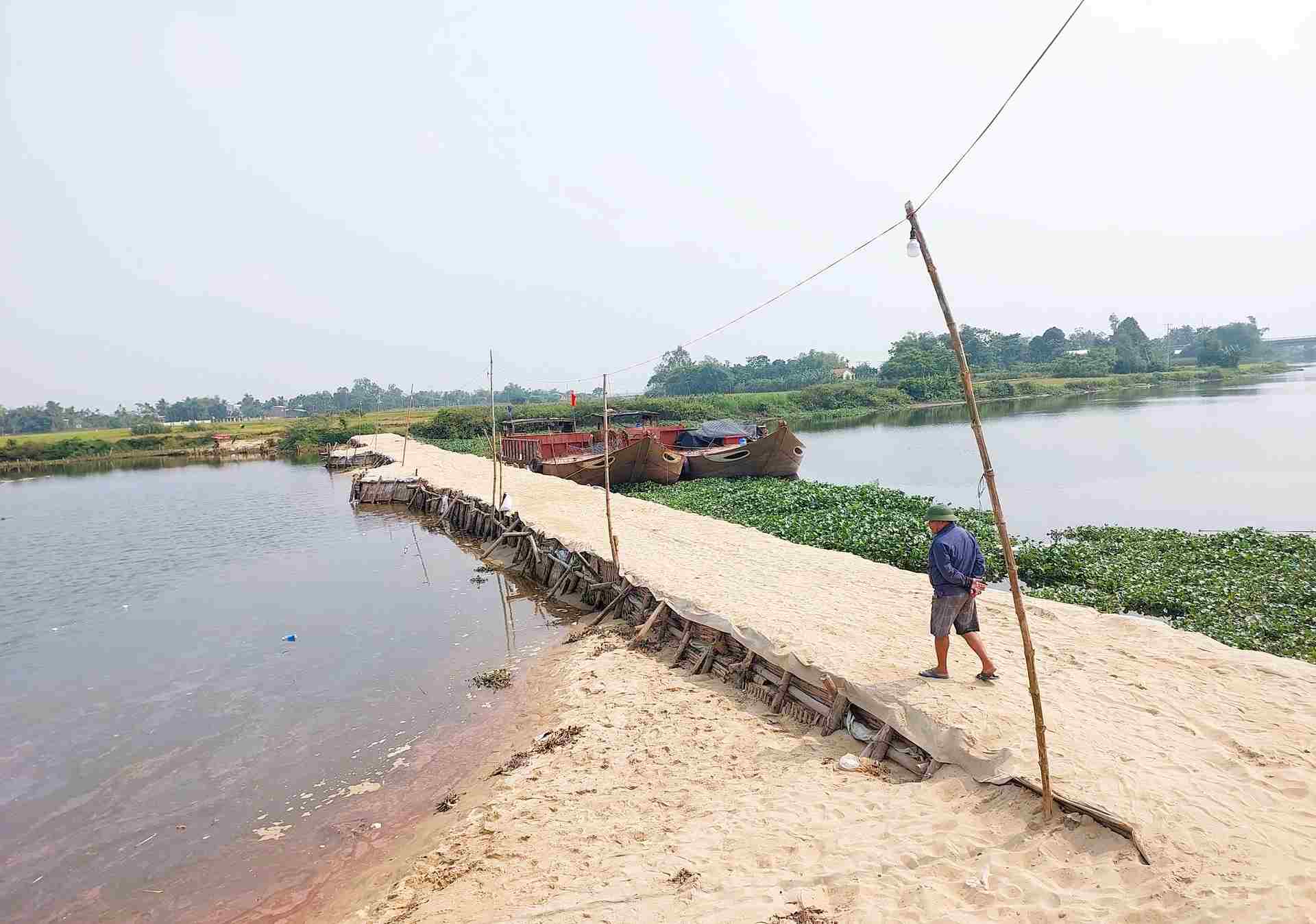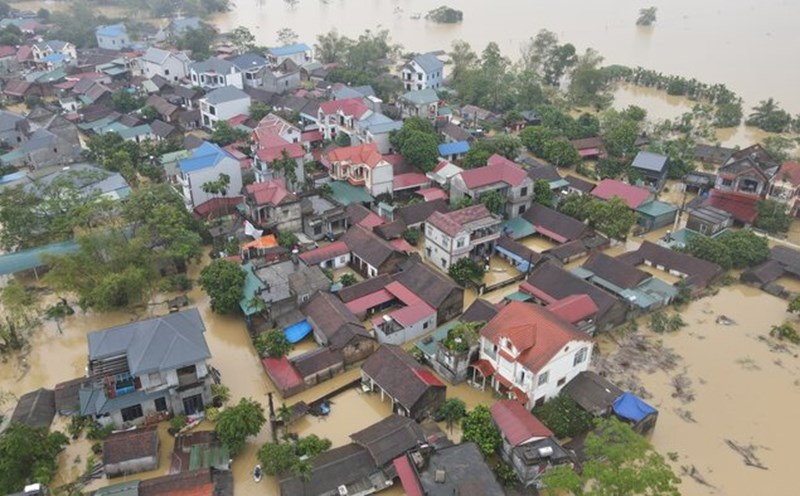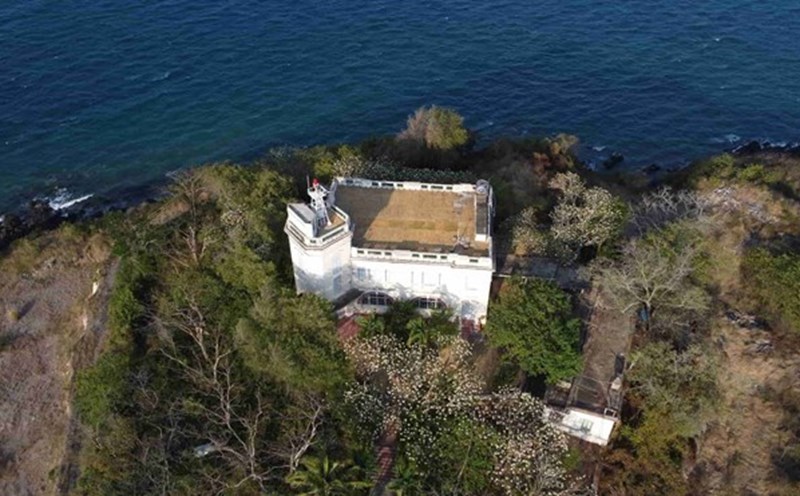A permanent dam project is an urgent solution to end a temporary loop that has lasted for more than a decade.
Thousands of hectares of rice are thirsty
Early in the morning, under the burning sunlight in the fields of Vien Trung (Dien Ban Dong ward, Da Nang city), Mr. Nguyen Van Tri (54 years old) stood still next to the golden rice fields due to lack of water.
"After the flood in June, I had to sow three times to replant a little rice. Now the salt water has risen again, I don't know if I can hold it," Mr. Tri said sadly.
Mr. Tri's story is not unique. This year, nearly 2,000 hectares of rice in Dien Ban, Hoi An and other riverside areas are in urgent need of irrigation water, but saline intrusion has caused Tu Cau pumping station - the most important water supply unit in the region - to stop operating alternately.
"After Tet, the salinity level rises very quickly. When the salinity exceeds 1.5-2‰, irrigation cannot be pumped. Without a dam to prevent salinity, the pumping station can only stop the machine, and the rice fields will gradually dry up," a technical officer at Tu Cau station shared.
Not only rice, Vinh Dien River is also the main source of domestic water for tens of thousands of people in Hoi An, Dien Ban and neighboring areas. When saltwater intrusion occurs, Hoi An water plant and domestic water supply stations are forced to face the risk of lack of input.
"Without a dam, it is a loss. Some years, the fields are built, and when the flood comes, they are gone. People are waiting, but rice cannot wait" - an agricultural officer said.

Building a permanent dam to solve the problem
Recently, the Da Nang government has had a policy of rebuilding the dam project to prevent salinity on the Vinh Dien River to keep the water fresh for the summer-autumn crop.
It is estimated that for each crop season, the Da Nang government allocates 3 - 4 billion VND from the budget to build temporary sand dams to prevent salinity on the Vinh Dien River. When the rainy season comes, the dam is removed to avoid flooding, and then rebuilt early next year. This loop has been maintained for more than a decade, costing more than 30 billion VND to the budget but still cannot solve the fundamental problem.
Mr. Truong Xuan Ty - Deputy Director of the Department of Agriculture and Environment of Da Nang City - admitted that this is just a temporary solution. Sand dams block the entire river, so the flow cannot be regulated, easily causing risks when big floods come. Meanwhile, the need to use fresh water for agricultural production and daily life is increasingly urgent.
Since 2023, the government of Dien Ban town, the old Quang Nam province, now part of Da Nang city, has officially proposed to build a permanent mangrove dam on the Vinh Dien river. This will be a solid project, allowing flexible flow regulation, only closed when salinity intrusion and opened when there is a flood, while ensuring the circulation of ships and boats.
According to Mr. Ty, this project has been included in the national irrigation development plan and is included in the medium-term investment portfolio for the period 2026 - 2030 of the Ministry of Agriculture and Environment.
However, due to some concerns that the construction of the dam will affect the downstream flow, it is necessary to have a full environmental impact assessment. This has caused the project to not be implemented even though it is in the plan.
The eternal dam on the Vinh Dien River is not only related to 2,000 hectares of rice, but also the livelihood of thousands of households, clean water for tens of thousands of people and a foundation for sustainable development in the downstream area of Vinh Dien - Hoi An - Dien Ban.
The project is included in the medium-term investment plan. The merger of Da Nang and Quang Nam is a favorable time to remove authority problems, agree on policies and launch the project. The permanent dam has not been built yet, the budget still has to be allocated evenly for the temporary loop, while people live in the situation of sowing seeds and worrying about lack of water.











